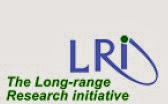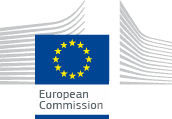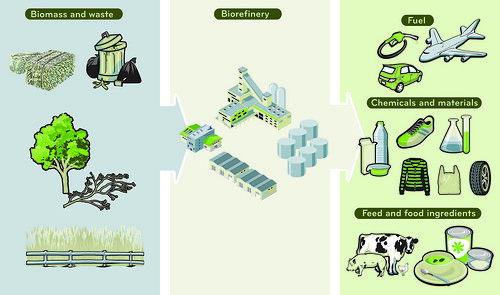SusChem started its preparations for Horizon 2020 with a brokerage event that attracted almost 200 participants to the Crown Plaza Le Palace Hotel, Brussels yesterday (October 23). Horizon 2020 is scheduled to kick-off on 1 January 2014 and SusChem, as the most prominent European Technology Platform (ETP), is ready to support the programme and ensure it achieves its goals of boosting competitiveness, jobs and growth in Europe.
Following on from briefings on the scope of the new European Commission programme, delegates spent the brokerage day outlining project proposals, describing their skills and experience, and meeting in 150 scheduled one-to-one meeting plus more informal and spontaneous networking.
Commenting on the event Jacques Kormornicki, SusChem Programme Manager at Cefic (left) said: "I want to thank all the participants for their involvement in this active participation from the industry which is key in the future success of Horizon 2020."
"We are now focusing on turning this success into the building of consortia to submit proposals when the calls come out in December 2013," he continued. "We will be organizing either webinars or another brokerage event in January 2014.
The final decision on this will be taken when the calls are out and based on the feed-back from participants. The new Grant-iT tool, which is designed to help SusChem stakeholders to participate to the calls and find partners will also be ready end 2013."
The event continued the atmosphere of intense collaboration and innovative zeal that had been evident at the
SPIRE PPP brokerage event on 22 October and is typical of the vision and innovation leadership that SusChem has shown since its foundation in mid-2004.
SusChem success
SusChem board member Prof Rodney Townsend got things started with an outline of SusChem’s achievements. He praised the dedicated support work of SusChem’s national technology platforms (NTPs) that have mobilised stakeholders in 12 Member States and he welcomed SusChem Switzerland as our latest NTP.
He noted the success that SusChem had achieved in FP7 with an estimated €300 million of EU public funding per annum for projects that aligned with the SusChem strategic roadmap. He looked for similar achievements in Horizon 2020. He said that SusChem had been actively engaged in discussions on Horizon2020 since 2011 to ensure that sustainable chemistry and industrial biotechnology remain a major part of it, to successfully work with key European Innovation Partnerships (EIPs), and in particular to help launch two public-private-partnerships in Horizon 2020:
SPIRE and the
BioBased Industries JTI.
SusChem was also actively involved in identifying areas in the Future Emerging Technologies theme for sustainable chemistry and biotechnology. The full scope of SusChem activities is illustrated below.
The starting point for the brokerage activities was the draft Horizon 2020 work programme for the first two years. With the first calls to be published in December it was now time to start preparations! And there was also a need to think about calls for 2015. Rodney wished everyone a fruitful meeting and indicated that, if stakeholders required it, SusChem will organise another brokerage event early in 2014.
Prominent ETP
Soren Bowadt of the European Commission DG Research and Innovation also praised SusChem for its success with major projects such as the F3 factory project and its ability to set up two PPPs for Horizon 2020 describing SusChem as “the most prominent of the ETPs.”
He then outlined the Horizon 2020 programme with its emphasis on innovation and demonstration activities. A key part was the deployment of Key Enabling Technologies (KETS) that were strategic technologies that could drive competitiveness and growth based on knowledge.
He described the Commission’s wish for an impact orientated approach and their likely focus on Technology Readiness Levels (TRLs) in the range 3 - 8 for projects to be funded under Horizon 2020. A set of definitions of TRLs to be used under Horizon 2020 is given below.
In Horizon 2020 KETs would be used to address the whole innovation chain from research to TRLs preceding commercialisation. He said that the PPPs would be important. It was important to promote the involvement of industry and also ensure synergies between research and industry. The PPPs would be used to implement KETs in many areas.
He concluded by thanking SusChem for its contributions to the development of the work programme saying: “this would not have been possible without the vision of SusChem and your intense and constructive collaboration with the Commission.”
Impact
The plenary briefing session was completed by Jacques Kormornicki. He also praised SusChem’s impact, for example, SusChem priorities were found in 30% of the NMP calls in FP7 and SusChem also had significant impact in two other fields: KBBE and Energy.
In addition to SusChem’s energetic direct activity in EIPs (Water, Smart-Cities and Communities, Raw Materials) and the SPIRE PPP, it was supporting the Bio-Based Industries JTI and the
Energy Efficient Buildings PPP. There was also strong activity in Materials Technology along the “value chain” including membership of the umbrella Alliance for Materials (A4M). SusChem had also taken up the role of promoting innovation early on and had been heavily involved in the formulation of the KET concept that is the basis of the Horizon 2020 pillar on Industrial leadership.
Jacques showed an analysis of the draft Horizon 2020 work packages from its societal challenges and industrial leadership pillars (see below). Some 200 work packages already mapped onto SusChem priority areas.
This showed the opportunity in Horizon 2020 said. Jacques. Delegates had the full analysis ‘matrix’ of the Horizon 2020 work programmes versus SusChem priorities and a full list of participants and presentations in today’s meeting – it was now up to participants to identify relevant topics and find partners for fruitful collaborative work.
Brokerage bonanza
Esther Agyeman-Budu of Cefic outlined how the various brokerage activities during the day. A first plenary set of project presentation was made before lunch and then three parallel sessions were organised after lunch on Materials, Resource and Energy Efficiency, and Water and Biotechnology.
In total 45 Project Idea or Areas of Interest presentations were made including 12 presentations from the chemical industry including two made via through SusChem NTPs.
After project presentations an intense session of ‘speed-dating’, one-to-one meetings and other networking opportunities took place.
To complete the day and wrap up proceedings Jacques Komornicki described the likely process and the tools available to SusChem stakeholders to assist project formation.
He highlighted the SusChem – PNO ‘matrix’ tool to check for relevant Horizon 2020 call topics and the revised GRANT-IT service for Horizon 2020 that would be launched at the end of 2013. This would be freely available for the whole SusChem community following registration.
The GRANT-IT tool will provide a searchable database of relevant funding programmes, project searching for partners, the ability to search for past and present European projects, and the opportunity to ask for personalised advice on a project idea. There will also be a facility for interaction via forums and comments as part of a brokerage process to develop some sound project ideas and consortia.
Further details of the GRANT-IT tool and how to access it will be covered by the SusChem newsblog when it is ready for launch.
Jacques reiterated that a second brokerage event could be organised in January 2014 if there was demand and in addition, again if there was a perceived need, SusChem could also organise webinars on specific programme areas.
Get involved!
SusChem stakeholder who wanted to get more involved with the brokerage activities around Horizon 2020 should contact either
Jacques Komornicki and
Pádraig Naughton at Cefic or
Ron Weerdmeester at PNO Consultants. And watch out for announcements on the SusChem website and SusChem News!























